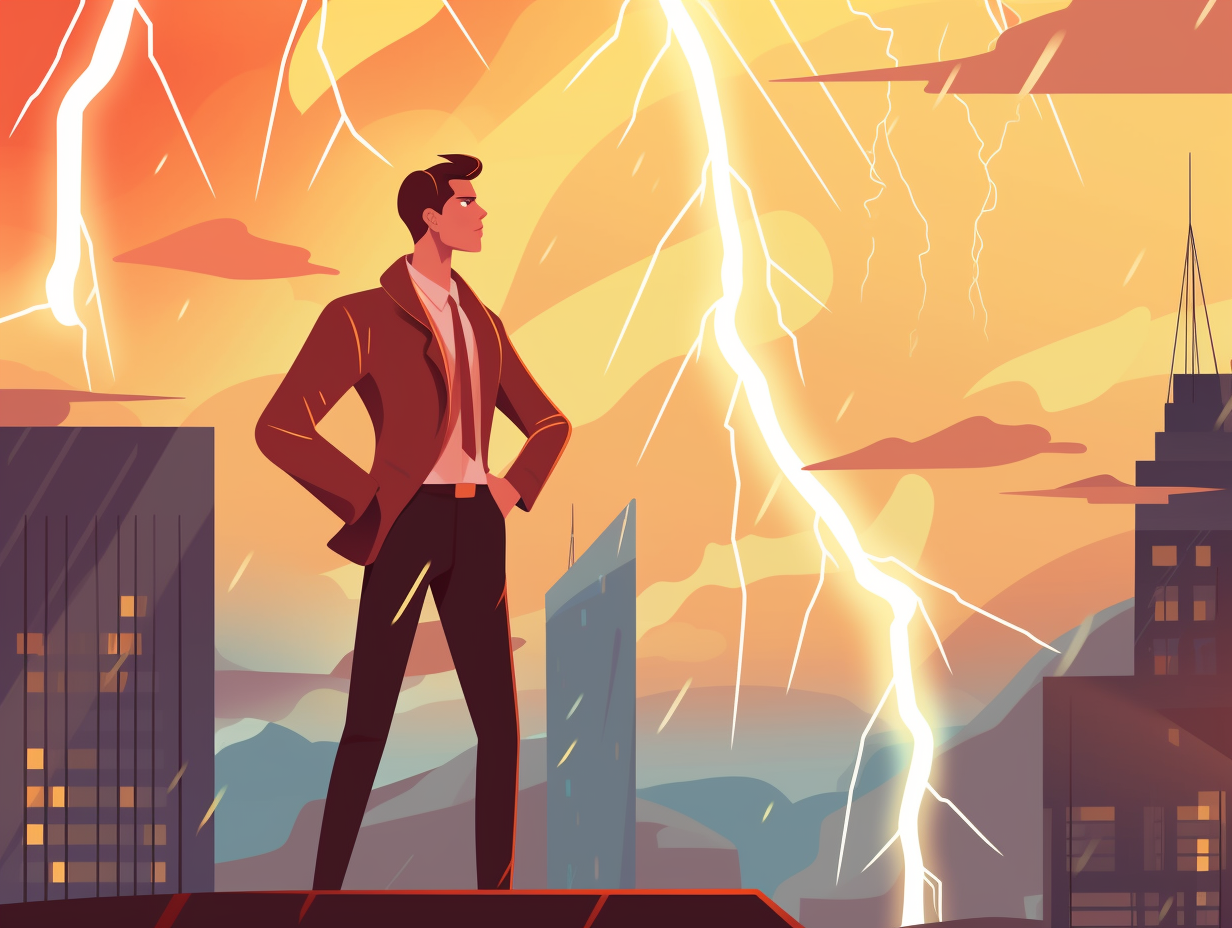Electrifying Discoveries: Top 8 Fun Facts About Thunderstorms You Never Knew!

1. Lightning Distance Countdown
Feeling a little "thunderstruck" when lightning hits the skies? Don't fret, a "flash" insight comes to the rescue: By simply counting the seconds between a lightning strike and the thunder boom, you can gauge the distance of the strike – every five seconds amounting to one mile, or every three seconds for one kilometer! Now, isn't that a "shockingly" fun party trick?
Source => noaa.gov
2. Lightning's Unexpected Appearances
Lightning strikes like a paparazzo crashing a celebrity party, popping up in places you wouldn't expect, from fiery volcanoes to blazing forest fires: The electrifying truth is, while thunderstorms still hold the title for the most common lightning playgrounds, these electric bursts can also be found amidst volcanic eruptions, forest fires, and even within clouds that skip out on the thunder.
Source => weather.gov

Did you know the Empire State Building is a "thunder-magnet," attracting lightning roughly 23 times a year? Discover more electrifying facts on our fun facts page! ⚡
=> Fun Facts about Lightning
3. Lightning's Social Distancing
Hold on to your umbrellas, folks: lightning is more social-distancing-conscious than you think! It’s known to make an electrifying appearance up to 10 miles away from the heart of a thunderstorm – about as far as its thunderous applause can be heard. So remember, when nature's flashy light show begins, adopt the lightning's long-range tactics and seek shelter indoors for a good 30 minutes after the encore.
Source => weather.gov
4. Lightning: The Fertilizer Specialist
Why did the lightning bolt apply for a job at the gardening center? Because it's an electrifying fertilizer specialist: Thunderstorms generate lightning that split nitrogen molecules and combine them with oxygen, creating nitrogen oxides that dissolve in raindrops, eventually nourishing the soil and promoting plant growth with their high-powered, nature-made fertilizer.
Source => actionnews5.com

5. Benjamin Franklin's Kite Experiment
"Wake up, Benjamin! There's electricity in the air!" – no, not just another founding father smashing hit musical, but the real story behind Benjamin Franklin's famous kite-and-key romance with thunderstorms: Contrary to popular myth, the electrifying experiment with the kite wasn't to invent the lightning rod; Benny had already concocted that ingenious invention prior to his stormy flirtation. The experiment aimed to prove lightning's love affair with electricity, ultimately making lightning rods the talk of the town, and keeping homes safe from lightning's unrequited passion for destruction.
Source => fi.edu
6. Florida: The Lightning Damage Superhero
If Florida were a superhero, it'd certainly be called Lightning-Claim-Damage-Man: In 2021 alone, the Sunshine State lived up to its electrifying alias with an impressive 5,339 lightning-related property damage claims, worth a shocking total of $88.3 million! Between Orlando and Tampa, Central Florida's "Thor's Playground" boasts the highest lightning strike rate in the region, causing an average of $16,552 in financial jolts per claim. So buckle up, all you lightning lovers, and embrace Florida's electrifying rollercoaster ride!
Source => tampabayclaim.com
7. Bolts from the Blue Surprise
Beware of the sneaky sky ninja: lightning can strike even in clear blue skies! These elusive "bolts from the blue" are a type of lightning that originates from a thunderstorm miles away and can travel as far as 25 miles from their original location, causing unpredictable and hazardous situations.
Source => rochesterfirst.com
8. Cow Udder Clouds
Ever tried milking a cloud? "Mammatus" clouds might make you consider grabbing a ladder and a bucket: These funny-looking formations resemble cow udders hanging from the sky! But don't let their comical appearance fool you: Mammatus clouds are associated with severe thunderstorms, and their presence indicates turbulent air and potential danger, earning them a "steer clear" warning for pilots.
Source => washingtonpost.com
Related Fun Facts




















